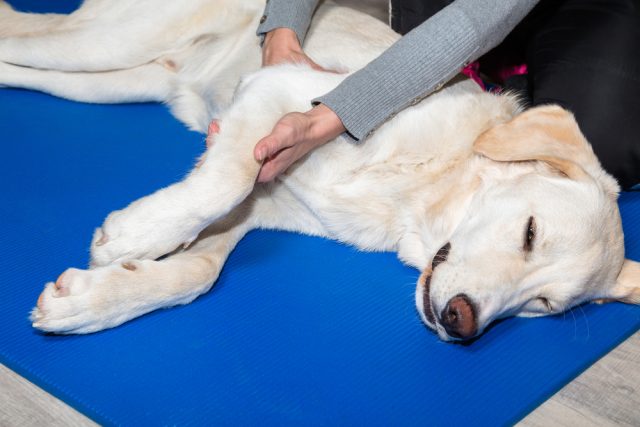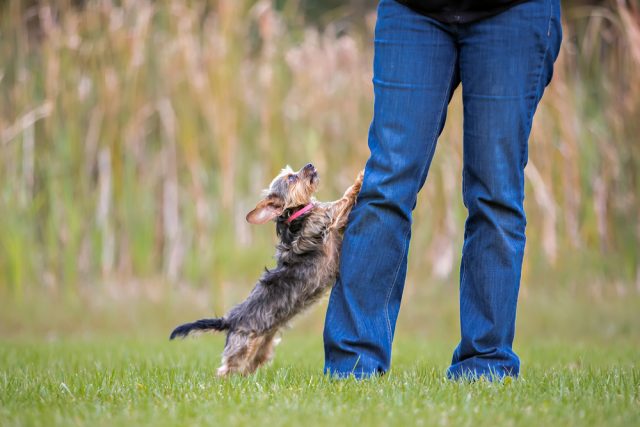Having a nervous or scared dog can be challenging for a dog owner. It takes a lot of patience and understanding. Whether your dog was born with a shy personality (the type that would rather hide than greet a new person) or had some bad experiences that made them fearful, you (understandably) would like them to be able to function in the world.
The following are 8 tips that you can use to help your nervous dog to relax, which will make training and daily life generally easier. Many people find using a combination of some or all of these tips makes for a relaxed dog.
#1 – Play Classical Music
Studies have shown that playing classical music can calm dogs down. Check out my article on Through A Dog’s Ear, canine sound therapy programs, for more information.

#2 – Teach A Mat Behavior
Many canine behaviorists and dog trainers use mat training as a way to teach dogs to relax while things are going on around them that may scare them. It gives them a “safe” place to lie down and a job (staying on the mat) to focus on, rather than the environment.
#3 – Canine Massage
Just like with humans, massage is a great way to get a dog to relax. It may take some time before your shy pup will even let you touch him like this, but once he realizes the affect, he will love it. Look for classes or clinics near you on how to properly give your dog massage. The National Board of Certification for Animal Acupressure & Massage is a good resource.

#4 – Be Calm Yourself
Dogs pick up on our own energy. If you are nervous about a situation, don’t take your dog there, it will just make their anxiety worse. Work on being quiet and calm when you are handling your nervous dog, to help him feel relaxed. Take deep breaths and don’t move fast or in big gestures. Getting low and sitting with your dog can help too.
#5 – Be Consistent
Dogs like routine. Nervous dogs will be even more nervous if you keep changing the rules on them. Am I allowed on the couch or not? Can I jump up on people or not? Keeping your rules unchanged will help a nervous dog relax and be comfortable in your home.

#6 – Use TTouch
TTouch, like canine massage, can help your dog relax. It was developed for horses originally, and has since been found to work amazingly well on dogs.
#7 – Add Distance
If your dog is nervous about certain things, such as people, dogs or cars, adding distance between the object and your dog can help them relax. Move far enough away that your dog gets comfortable enough that she will still work (i.e. respond to cues, take treats, etc.). This is your dog’s threshold point. Once you know that, you can work on slowly closing the distance using counter-conditioning (pairing scary object with treats), while your dog remains calm.
#8 – Use An Anxiety Wrap
While these may not work on all dogs, I have found them to be useful. I have a fearful dog who used to get car sick. After wearing the Thundershirt a few times, she stopped throwing up in the car and no longer needs to wear the Thundershirt. They can work for all sort of situations, from thunderstorms to everyday anxiety. Be sure to follow the directions and do not leave one on your dog for extended periods of time. Several other companies make anxiety wraps now, so you have some option and each fits a bit different.

 Toledo, United States.
Toledo, United States.
